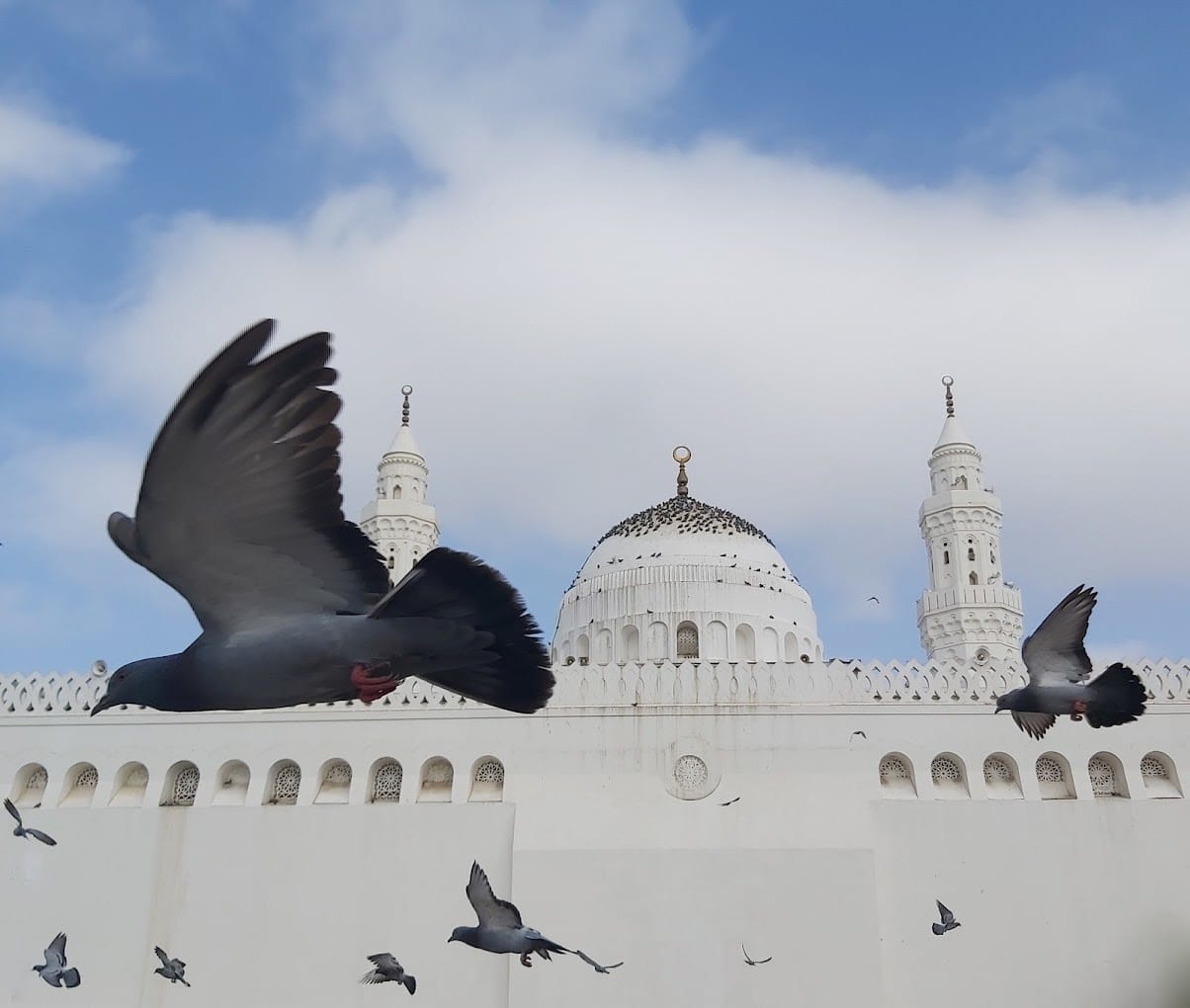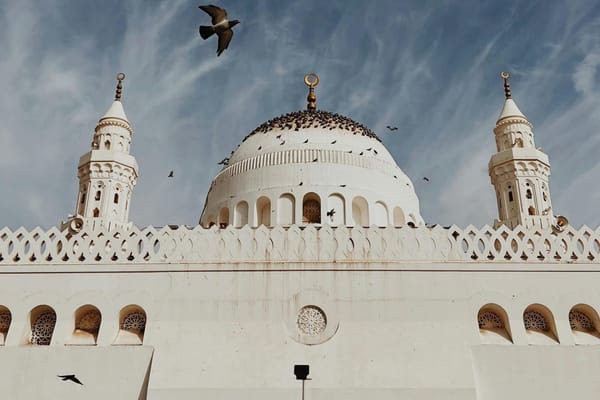Masjid al-Qiblatain, or the Mosque of the Two Qiblas, isn't just a building—it’s a story. A story of transformation, of spiritual awakening, and of a pivotal moment that forever changed the course of Islamic prayer. Located in the historic city of Madinah, this mosque is not only a site of deep spiritual importance but also easily accessible to visitors. The Madinah Hop-On Hop-Off Bus has become a preferred option for its convenience and scenic route that includes Masjid al-Qiblatain among its 12 key stops.
Join us as we walk through time and uncover the narrative woven into the walls of this sacred mosque in Madinah.
Historical Background of Masjid al-Qiblatain
The Prayer That Changed Direction
Before it was called Masjid al-Qiblatain, this mosque was simply known as the mosque of Banu Salama, the tribe in whose area it was built. It was during a prayer in this mosque that a momentous command was revealed to the Prophet Muhammad (ﷺ), altering the spiritual compass of the Muslim ummah forever.
For 16 to 17 months after the Hijrah, Muslims had been praying towards Bayt al-Maqdis (Jerusalem). Then came the revelation:
"We have certainly seen the turning of your face, [O Muhammad], toward the heaven, and We will surely turn you to a qibla with which you will be pleased. So turn your face toward al-Masjid al-Haram." — Surah Al-Baqarah (2:144)
According to narrations, the Prophet (ﷺ) was in the middle of leading Dhuhr prayer when this divine command came. He turned mid-prayer toward the Kaaba in Makkah, and the congregation followed. This act of immediate obedience by the Prophet (ﷺ) and his companions serves as a symbol of unity, submission, and the growing distinction of the Islamic faith.
Construction and Historical Developments
From Simplicity to Significance
The mosque was originally built by Sawad ibn Ghanam ibn Ka’ab, a companion of the Prophet (ﷺ). Its association with the change of qibla transformed it from a local community mosque into a site of immense religious importance. From that day, it was known as Masjid al-Qiblatain—the Mosque of the Two Qiblas.
A Legacy Preserved
Over the centuries, various rulers took steps to preserve and enhance the mosque:
- Ottoman rulers carried out repairs and ensured its upkeep.
- King Fahd’s 1987 Renovation: Architect Abdel-Wahed El-Wakil led a redesign that removed the original Jerusalem-facing mihrab but preserved the mosque’s symbolism in its twin domes.
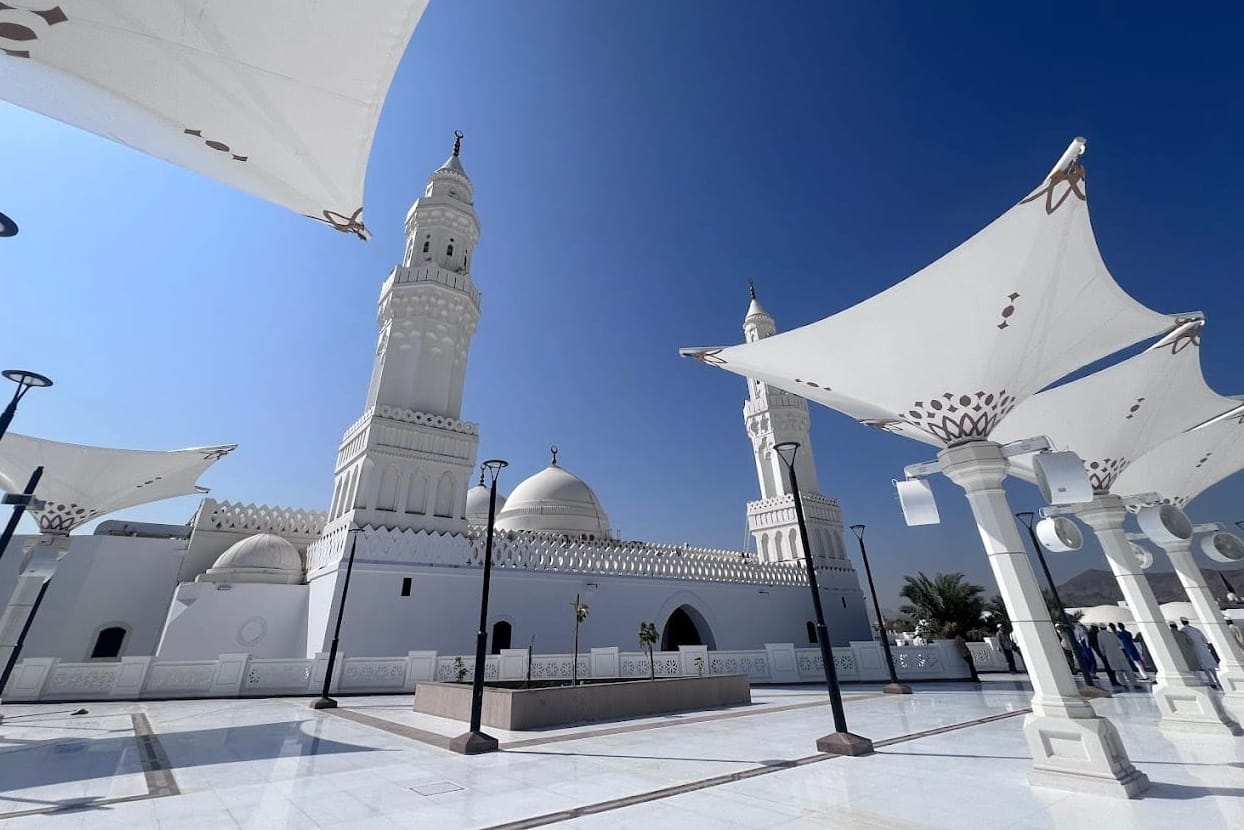
Architectural Highlights and Current Features
A Blend of History and Modern Design
Today, Masjid al-Qiblatain offers both aesthetic beauty and spiritual tranquility. Its architecture reflects traditional Islamic principles, with clean lines, soft tones, and symmetrical balance.
Architectural Highlights:
- Twin Domes: Representing the two qiblas.
- Two Minarets: A classic feature in Islamic architecture, visible from a distance.
- Spacious Prayer Hall: Can accommodate over 2,000 worshippers.
- Mihrab: Currently aligned with Makkah, though subtle design cues still reference its unique past.
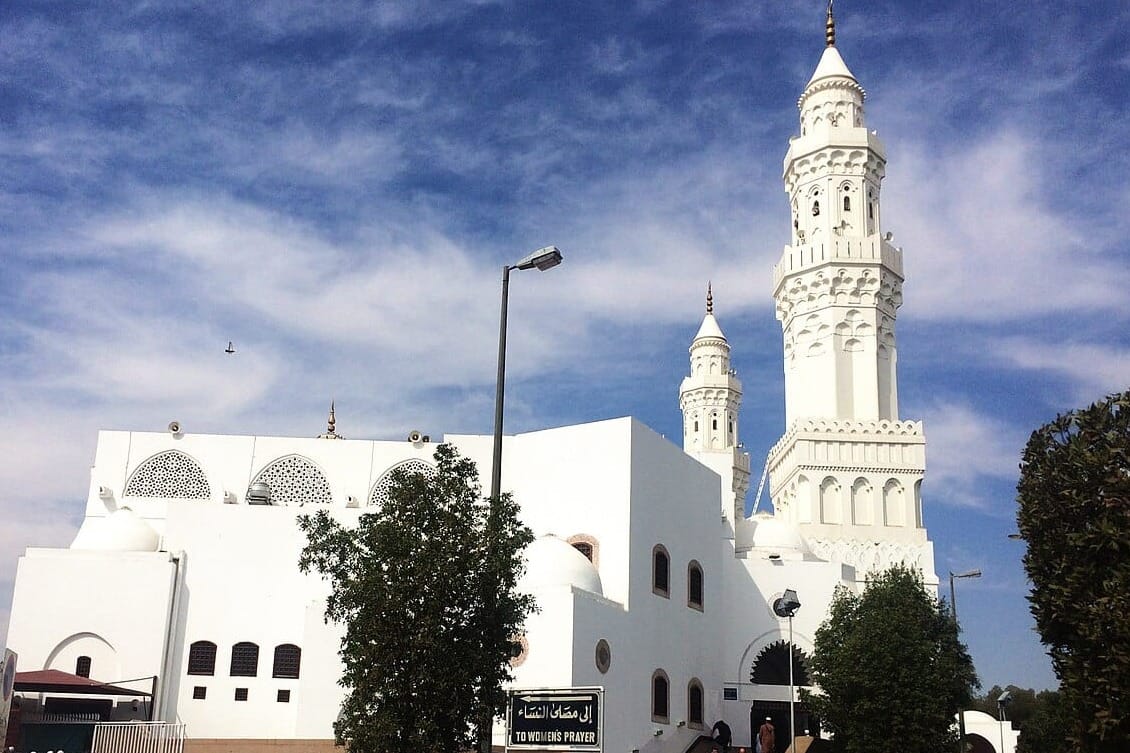
The Mood Inside Masjid al-Qiblatain
The serene atmosphere inside invites visitors to reflect. Soft natural light, open spaces, and elegant arches create a welcoming environment that honors the mosque’s sacred history.
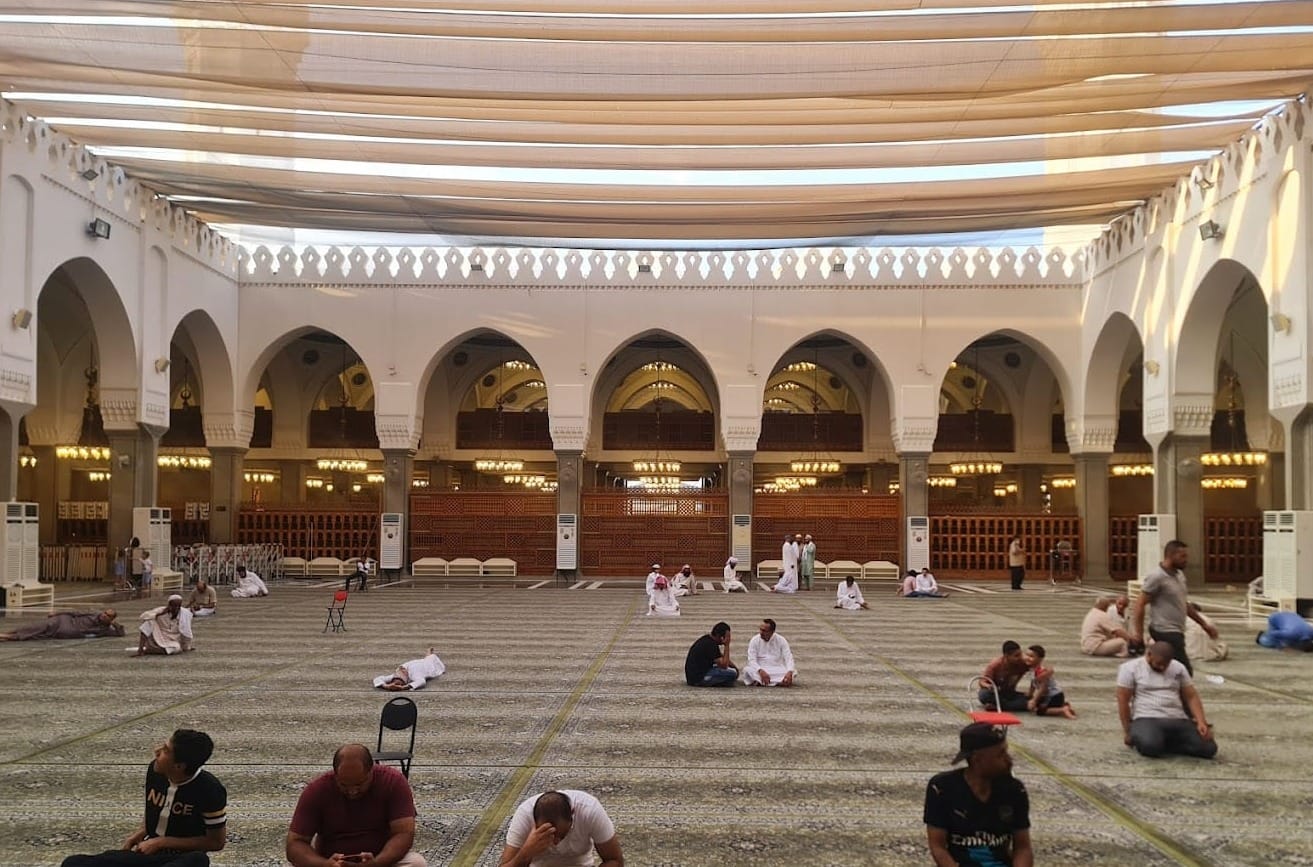
Visitor Information and Travel Tips
How to Get to Masjid-e-Qiblatain
Masjid Qiblatain is located on Khalid ibn al-Waleed Road, roughly 5 kilometers northwest of Al-Masjid an-Nabawi. It's accessible by private transport, however, the Madinah Hop-On Hop-Off Bus is often preferred by visitors for its seamless access to major sites, informative commentary, and comfortable ride.
About the Hop-On Hop-Off Bus
The Hop-On Hop-Off Bus in Madinah is a convenient and insightful way to visit major historical and religious sites, including Masjid al-Qiblatain.
- Ticket Price: SAR 80 for adults, 40 riyals for children, and 200 riyals for a family package.
- Inclusions:
- Access to multiple key sites such as Masjid al-Nabawi, Al-Quba Mosque, Mount Uhud, and more.
- Multilingual audio guides providing historical and cultural context.
- Air-conditioned seating and panoramic views from the upper deck.
- Flexibility: Buses run every 30 mins, allowing you to explore each stop at your own pace.
For visitors looking to combine comfort with learning, this bus service provides a well-rounded travel experience through Madinah’s most treasured landmarks.
Best Times to Visit
- Early Mornings: Fewer visitors and a peaceful atmosphere.
- After Isha Prayer: Enjoy the cool air and night-time serenity.
- Outside Hajj Season: More space and less congestion.
Travel Tips
- Dress Modestly: Conservative attire is required.
- Combine Visits: Nearby Masjid Quba and Mount Uhud offer a full Ziyarat experience.
Religious and Cultural Importance
A Place of Spiritual Transformation
Masjid al-Qiblatain invites worshippers to connect with one of the most defining events in Islamic history. Standing here is standing at the crossroads of prophetic obedience and communal identity.
A Must for Pilgrims and Travelers
Whether you're performing Umrah, Hajj, or exploring Madinah, this mosque is more than a stop—it’s a lesson in the evolution of Islamic worship and unity.
Places to Visit Near Masjid Qiblatayn
- Masjid Quba: The first mosque built in Islam. Constructed during the Prophet Muhammad’s (ﷺ) migration from Makkah to Madinah, Masjid Quba holds the distinction of being the earliest foundation of a mosque in Islamic history. It is said that offering two units of prayer here holds the reward of an Umrah. The mosque is known for its serene ambiance and simple yet elegant architecture.
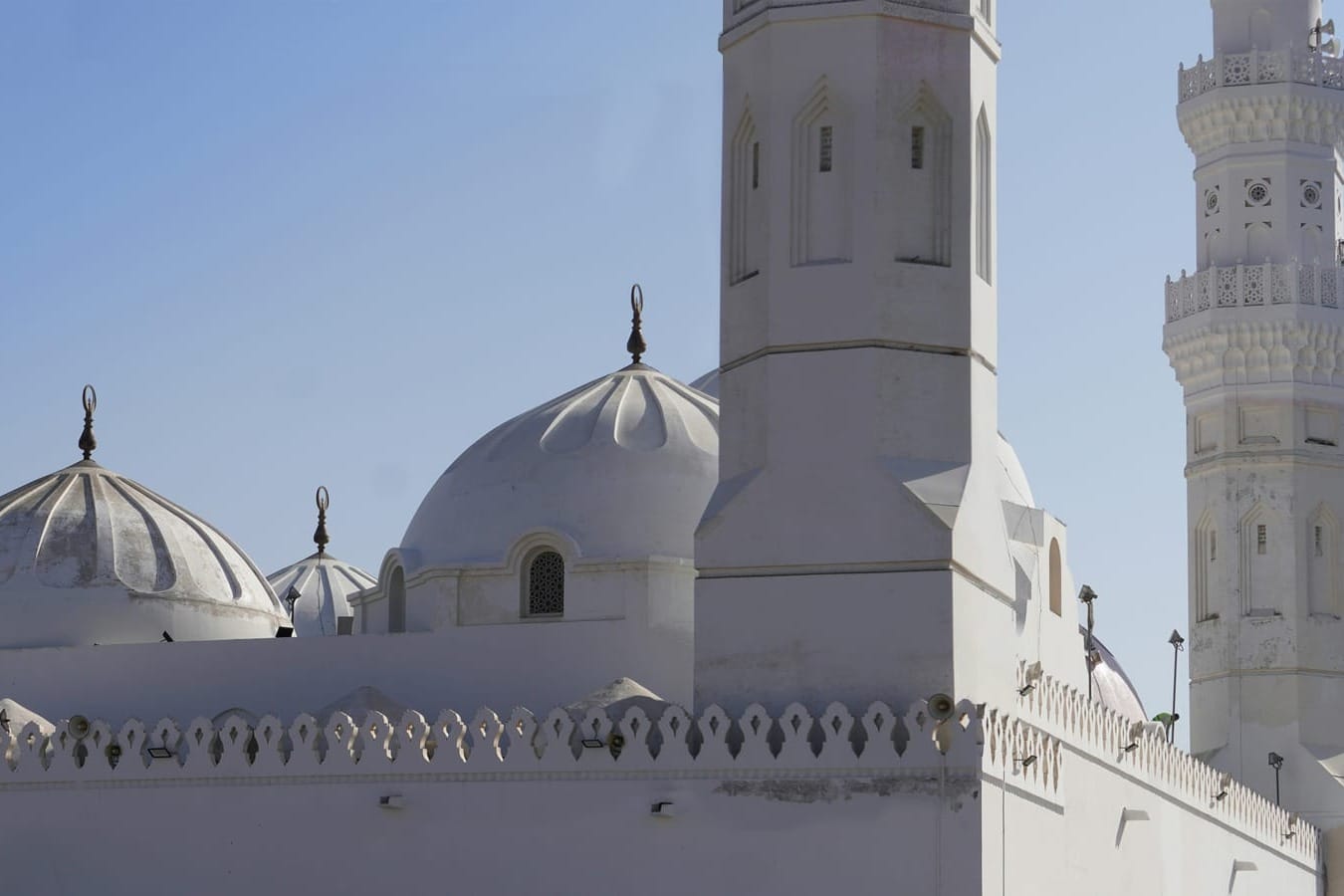
- Mount Uhud and Martyrs’ Cemetery: Site of the Battle of Uhud. This sacred mountain witnessed one of the most intense battles in early Islamic history. Many companions of the Prophet(ﷺ), including his beloved uncle Hamzah ibn Abdul-Muttalib, were martyred here. Visitors often climb a portion of the mountain and offer prayers at the adjacent cemetery to honor those who sacrificed their lives.
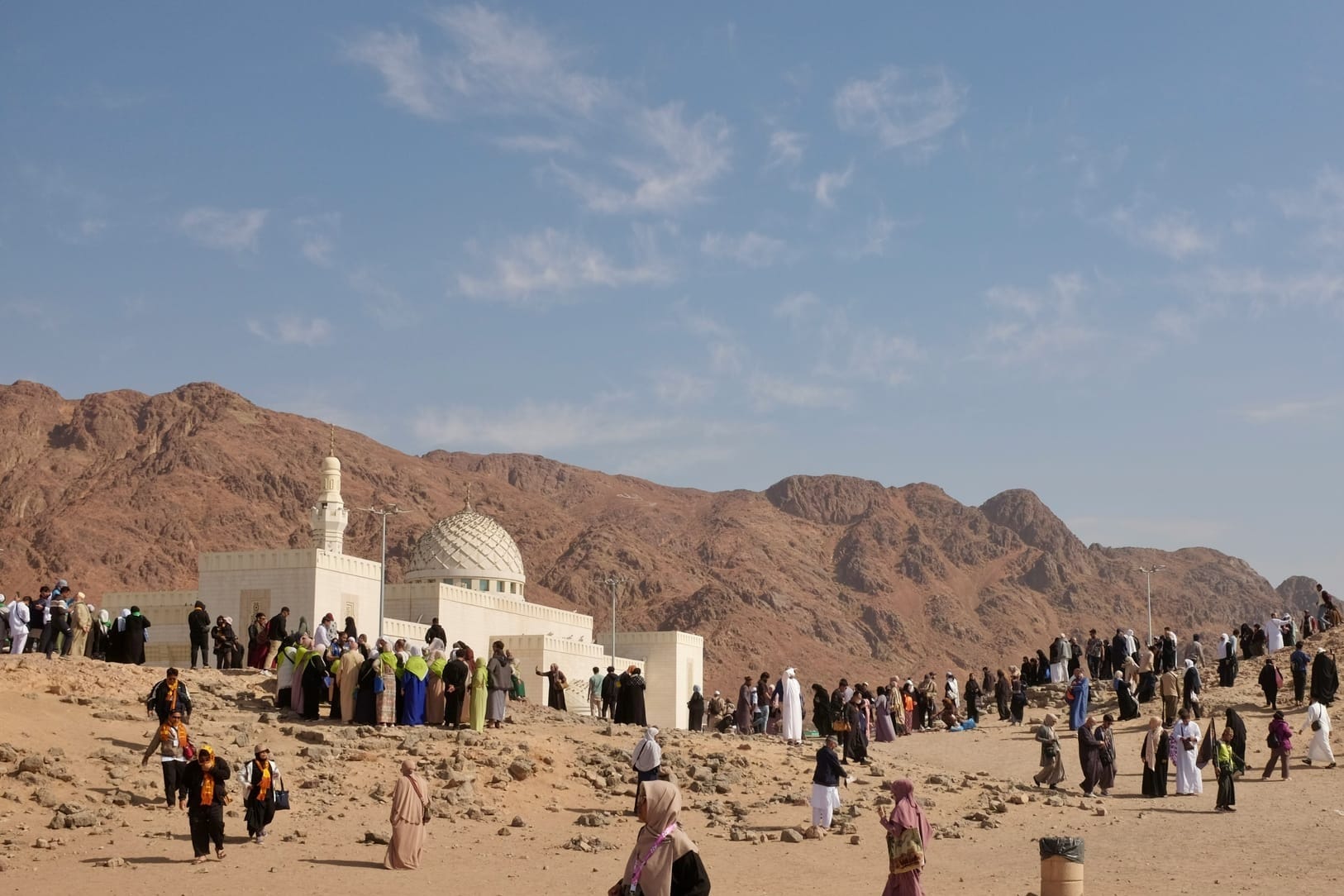
- Masjid al-Jummah: The Prophet’s (ﷺ) first Friday prayer in Madinah. Also known as Masjid al-Awabeen, this small but historically significant mosque marks the place where Prophet Muhammad (ﷺ) led the first Jumu’ah (Friday) prayer upon arriving in Madinah. The mosque stands as a symbol of the establishment of communal worship in Islam.

- Masjid un-Nabawi: The Prophet Muhammad’s (ﷺ) final resting place. One of the holiest sites in Islam, this grand mosque was originally built by the Prophet himself and later expanded by successive Islamic rulers. It houses the Rawdah, a revered area between the Prophet’s (ﷺ) home and pulpit, considered one of the gardens of Paradise. Millions of pilgrims visit annually to offer prayers and pay their respects.
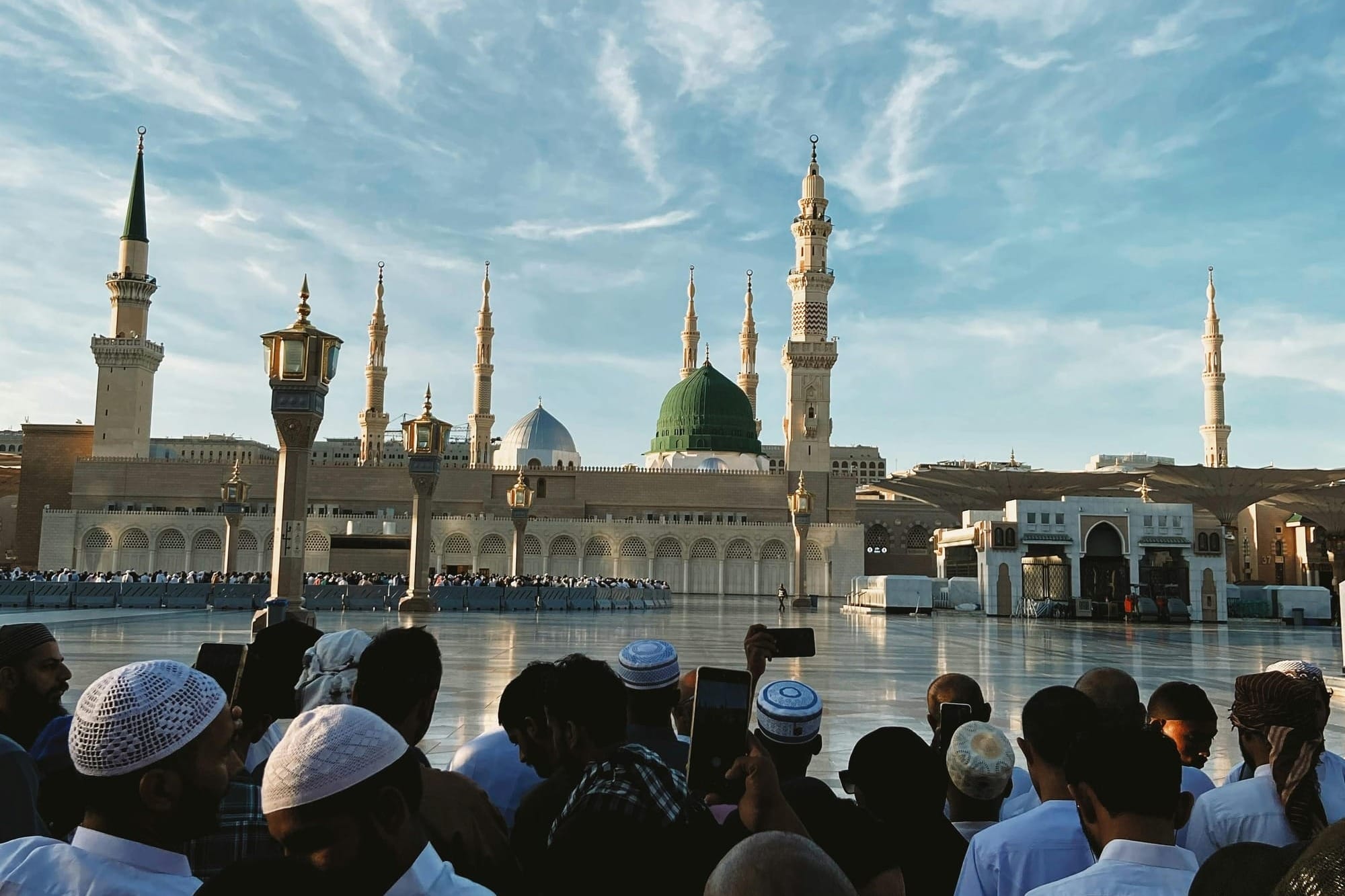
A Final Reflection
Masjid al-Qiblatain is more than a destination—it’s a spiritual journey. In its quiet corners and powerful history, it offers lessons of faith, unity, and identity.
Don't just visit—experience it. Let the story of the Two Qiblas guide your steps and deepen your connection to Islamic heritage.
May your visit be filled with reflection, peace, and a deeper understanding of faith!

